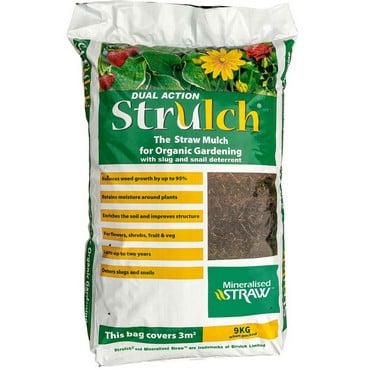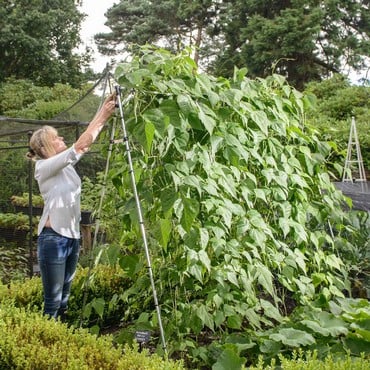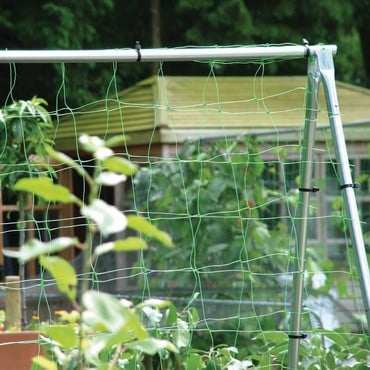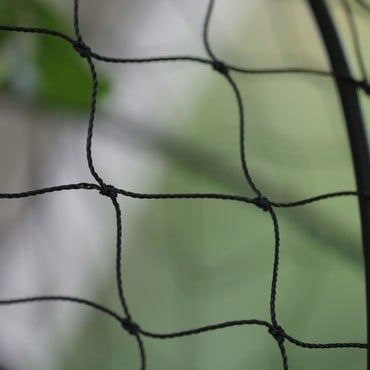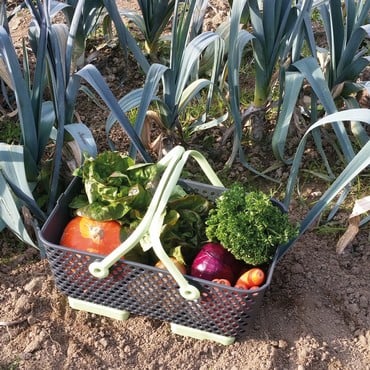Let’s talk about peas…
Nothing comes close to home-grown peas for their tenderness and taste. Though, you’ll have to eat them quickly, once picked their sugars quickly turn to starch causing them to lose their delightful sweetness and flavour. Aside from taste, they’re an attractive crop to grow and won’t take up too much space. What’s more, peas thrive in cooler climes, so are perfectly suited to growing outdoors in the UK.
Did you know? one serving of peas contains as much vitamin C as two large apples and more fibre than a slice of wholemeal bread.
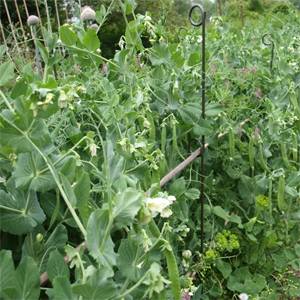
The growing process
Pick your varieties
The most difficult part of growing peas is selecting which variety to grow. Here are our top pea picks for growing success:
Jumbo
As its name suggests, ‘Jumbo’ produces large, pointed pods reaching up to 13cm long. Each generously proportioned pod contains up to 10 plump and tender peas with a delicious sweet flavour.
Avola
This compact variety grows to just 60cm tall, making it perfect for containers and small plots. Avola is early maturing, producing an abundance of tender pods, each packed with up to 8 succulent peas with a superb, sweet flavour.
Kelvedon Wonder
This high yielding early pea produces two pointed, dark green pods per node, with each pod containing up to 8 small, but very sweet peas. The flowers are edible too and look pretty sprinkled over a salad.
Canoe
With long slightly curved pods of up to 12 peas, this highly productive variety is set to become ideal for exhibition. The heavy crops are carried on semi leafless stems for easy picking. Canoe peas have a delicious sweet flavour and are particularly suited to freezing.
Sowing
Peas can be sown directly into the soil from February through to June. If the weather is particularly unseasonable, start your peas off in a greenhouse or on a sunny windowsill, and transfer your seedlings into the garden when temperatures rise.
Choose a sunny spot with fertile soil and sow the seeds 5cm apart in shallow drills between 2.5cm-5cm deep. If you sow a second row, space it at a distance equal to the height of the crop.
Pea care advice
- Apply mulch around growing peas to keep moisture in and minimise weed growth.
- Water the plants when they start to flower and two weeks after.
- Most peas, apart from dwarf varieties, will require a suitable pea support frame to scramble up.
Harvesting
As they start to mature, keep an eye on your peas as the earlier they are picked the sweeter they’ll taste. They tend to mature quickly, so continue to check daily once you see the flowers in bloom. Harvest regularly to encourage your plants to keep on producing. When picking, start from the bottom of the plant where the peas mature first and work your way up. Although you can freeze your peas, they are at their tastiest immediately after harvest.
Peas can be stored in the fridge for up to 5 days. Alternatively, they can be frozen. Wash, blanch, immerse in cold water and pack in sealed containers.
Tip: Pick peas in the morning when they are at their crispiest.
Other uses for your surplus harvest of peas
Peas are incredibly versatile and can be used in a huge variety of dishes. Here’s our round-up of recipes that make the most out of fresh, delicious peas.
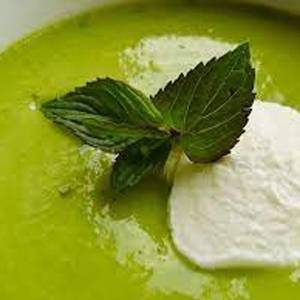
Pea & mint pesto
This pesto is an easy and delicious way to put your extra peas to use. Mix into hot pasta, gnocchi, spread on crusty bread, or use as a dip for veggies. In a food processor, combine fresh peas, mint leaves, parmesan, 1 garlic clove and black pepper. With the machine running, pour in olive oil until the pesto is smooth, combined and thickened to the desired consistency. If too thick, thin with a little lemon juice.
Creamy pea soup
Easy, convenient, full of nutrients and delicious – comforting pea soup is a winning dish that the whole family can enjoy. Sauté onions in olive oil then add potatoes and vegetable broth. Add peas and cook until all ingredients are tender. Turn off the heat, add fresh mint and blend.
Pea puree
Not to be mistaken for mushy peas, this puree is velvety smooth, adds a splash of vibrant colour to the plate and pairs well with just about any protein. Bring a large pan of salted water to the boil and simmer until peas are tender. Using an immersion blender, puree the peas and some mint to a smooth paste. Add salt and pepper to taste.
Spiced pea fritters
Quick to make and fabulous, these spicy fritters studded with peas are everyday winners. Simply combine peas, panko, onions, garam masala, salt, ground red pepper and eggs in a bowl. Heat some oil in a pan, divide your mixture into fritters and add to the oil. Cook for roughly 3 minutes per side. Serve with crème fraiche.


















